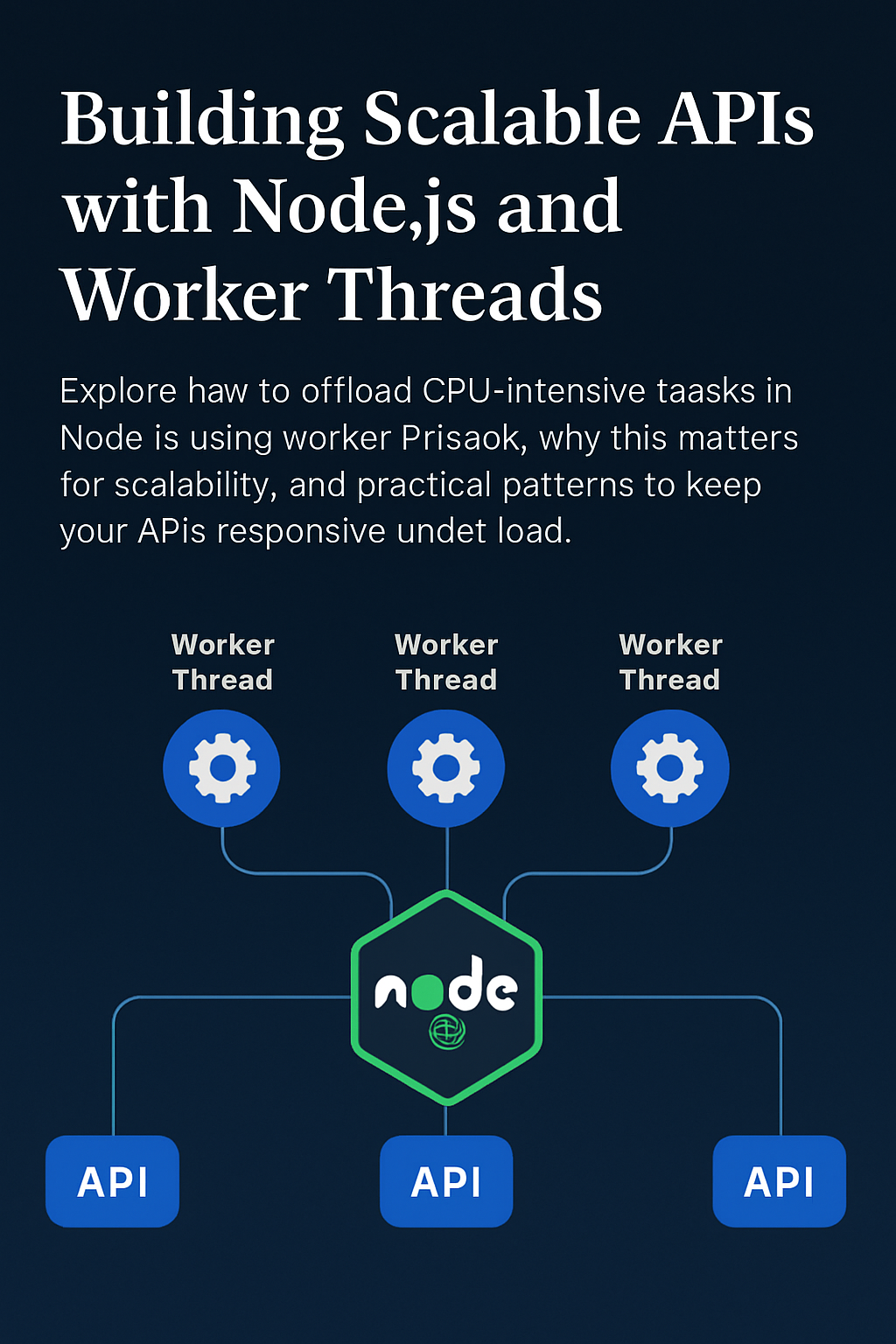
Node.js has earned its reputation for building fast, scalable network applications. Its single-threaded, event-driven model makes it excellent for handling I/O-bound tasks. But what happens when your API needs to process CPU-intensive work like image manipulation, data parsing, or complex calculations? By default, these tasks can block the event loop, making your API feel slow or even unresponsive. The solution? Using Node.js worker threads to offload heavy computation, so your main thread stays free to handle new requests smoothly.
Why Worker Threads Matter
Traditionally, Node.js relies on its single-threaded event loop to achieve high concurrency. This works great for non-blocking operations (database queries, network calls, etc.), but falls short when your app needs to crunch data.
Imagine an API endpoint that performs data encryption, image compression, or parsing large files. Without offloading, a single CPU-bound request could block other requests, hurting performance across your service.
Worker threads enable true parallelism: each worker runs in its own thread, isolated from the main event loop. This allows your API to process heavy tasks without slowing down the rest of your app.
Typical Use Case
A common scenario: you’re building an image upload endpoint where each image needs to be resized and optimized before storage. Processing on the main thread means every image slows your API for other users. Using worker threads, you can send each task to a worker, keeping the event loop fast and responsive.
Simple Example
Here’s a quick look at how you might use worker threads:
// main.js
const { Worker } = require("worker_threads");
function runHeavyTask(data) {
return new Promise((resolve, reject) => {
const worker = new Worker("./worker.js", { workerData: data });
worker.on("message", resolve);
worker.on("error", reject);
worker.on("exit", (code) => {
if (code !== 0)
reject(new Error(`Worker stopped with exit code ${code}`));
});
});
}
// Inside your API route handler:
app.post("/process", async (req, res) => {
try {
const result = await runHeavyTask(req.body.payload);
res.json({ success: true, data: result });
} catch (err) {
res.status(500).json({ success: false, error: err.message });
}
});
// worker.js
const { parentPort, workerData } = require("worker_threads");
// simulate heavy computation
const result = heavyComputation(workerData);
parentPort.postMessage(result);
Design Considerations
Worker threads unlock scalability — but design wisely:
- Pool workers rather than creating a new one per request.
- Use libraries like workerpool or piscina for management.
- Keep worker code isolated and lightweight.
- Be mindful of data transfer overhead (especially large payloads).
Beyond Worker Threads
Workers are great for CPU-bound tasks. For I/O scaling (databases, APIs), stick to Node’s async model. And if your app grows further, consider:
- Clustering: Run multiple Node.js processes across CPU cores.
- Microservices: Isolate heavy workloads in separate services.
- Queues: Use message queues (RabbitMQ, BullMQ) to distribute long-running jobs.
Combining these techniques helps build APIs that stay fast, reliable, and scalable — even as demand grows.
Conclusion
Node.js is more than just non-blocking I/O. By adding worker threads, your app can handle computationally heavy work without sacrificing responsiveness. Used thoughtfully, this small architectural change can transform your API from single-threaded bottleneck to modern, scalable service.
Next time you see your event loop blocked by CPU work, consider: could a worker thread help? Often, the answer is yes — and it’s easier than you might think.